For many years now Apple, Nike, Coca-Cola and many other top American companies have been building iconic brands into cultural icons by giving consumers experiences that create cultural capital. To do this, they use the unique music, video, and language of each generation. Nike created the Air Jordan culture; the announcement of a new Apple product is a much-anticipated international experience; and on a hilltop in Italy, Coca-Cola brought together young people from around the globe to “teach the world to sing.” In the past two weeks, America’s two major political parties gave master classes in this convergence of culture and experience. We witnessed the maturing of one movement and the birth of another. Both movements center on a cultural icon, creating a new cultural currency for their brand and telling very different stories of the American Dream. Donald Trump has had nine years to build the MAGA movement. Kamala Harris and the Democrats jumpstarted one in nine days following President Biden’s passing of the torch.
The MAGA brand
Donald Trump rallies have always been day-long marketing experiences around him as a cultural icon. The emotional capital of a failed assassination attempt created new cultural currency for the brand. The “millimeter miracle” was portrayed as divine intervention. It appeared in visuals of Jesus stopping the bullet and of Trump’s bloodied head and raised fist on t-shirts and mugs just hours after the shooting. His defiant shout, “fight!” became a new rally chant and bandaged ears reflecting Trump’s wound became a new look in the MAGA experience. A branded Trump assassination attempt trading card carried the call to arms: “First they tried to jail him. Now they tried to kill him. Stand strong.” Celebrity strong men like Hulk Hogan proclaimed Trumpamania for the wrestling world. The phrase “he literally took a bullet for America” is included in Trump introductions. James Brown’s “It’s a Man’s World” now alternates with Lee Greenwood’s “I’m Proud to be An American” as Trump’s walk-on song.
MAGA’s patriotism brand is built on the flag, nationalism, and nostalgia. It found a new face and words in J.D. Vance, who urges crowds to celebrate “what America once was, and with God’s grace, what it will soon be again.” His walk-on song is Merle Haggard’s anti-Iraq war song “Let’s Rebuild America First.” The story of his working-class family entered popular culture through the movie of his memoir “Hillbilly Elegy”; it moved into the top 10 most watched movies on Netflix the week after the convention. Chants for his late gun-loving grandmother “MaMaw” and cheers for his mother’s 10-year sobriety are now part of the MAGA rally experience. That’s powerful, brand-building cultural currency for many Americans whose families have endured the pain of addiction.
The campaign and convention may have been designed for Joe Biden as the opponent, but Kamala Harris as the embodiment of America’s changing culture fits the movement’s idea of the enemy just as well, if not better, than Joe Biden did. Republicans began trying ways to burnish their own brand while undermining the Democrats’ efforts to create their own cultural icon. Efforts that ring true and tap Americans’ concerns like “border czar” may be more effective than “DEI hire” if the first week of the battle of the brands is any indication.
Biden passes the torch to Kamala and ignites a movement
With 100 days to go, the compressed timeframe accelerated Democratic efforts to unite the party and jumpstart a movement. Having already made history as the first woman and the first Black and South Asian person to be vice president, Kamala Harris literally embodies a changing America. She represents not only a growing multicultural America but also the trend toward women in leadership, the trend toward higher education attainments for women, and the trend toward blended families and interfaith and interracial marriages.
In the first week, we saw examples of how that representation yields powerful cultural capital for her brand. The generational change at the top of the ticket unleashed music, language, and images to appeal not only to young people but also other generations eager to rejoin the fight. The chant “We’re not going back” and Beyonce’s “Freedom” as the campaign anthem counter the Republican’s nostalgia brand. The Obama “Yes We Can” poster has been recast as “Yes We Kam.” It’s the title of a video from the bipartisan women’s organization Seneca Project featuring influential women like Melinda French Gates.
Democrats are tapping the powerful cultural capital of movements born from America’s collective experiences including the George Floyd murder, January 6 insurrection, and Supreme Court Dobbs decision. These movements are rich in history and symbolism, now updated for the Kamala 2024 movement, best seen in the first video of the campaign.
Kamala as Rosie the Riveter embodied the candidate’s challenge: “Let’s Get to Work.” The prevailing symbol of the first week of work was Zoom. Two-hundred thousand people on a series of Zoom calls rallied Black, Latina, and white women and Black men, raising $200 million. According to participants, these calls didn’t just raise money; they were about strategy and how to get the job done.
Many of the women on these Zoom calls represented the trend Pew found on women in leadership and higher educational attainment. The latest attacks on their candidate for having a “low IQ”, being a “failure,” or a “DEI hire” may be great cultural currency for MAGA, but it infuriates these women. An army of social media warriors produced a backlash to J.D. Vance’s “childless cat lady” comment invoking Kamala’s name. Swifties flooded social media with Taylor Swift’s Time magazine cover with her cat and the tagline “Cat ladies stand back and stand by,” mimicking when Donald Trump in his 2020 debate with Joe Biden called on the Proud Boys, whose leaders would later be convicted for January 6, “to stand back and stand by.” The 2020 TikTok of Kristin Chenoweth’s Kamala take on her Wicked song “Popular” found a new audience. So did Keb’ Mo’s “Put a Woman in Charge” and the refrain “We demand to be heard; we demand to be seen,” from the Broadway musical “Suffs” about the fight for women’s suffrage.
The Democrats have a fight story just as the Republicans do, and Trump is at the center of both. The “prosecutor vs. the perpetrator” claims to “know Donald Trump’s type.” She says it with a smile, and for now, she seems more “happy warrior” than the “angry Black woman” portrayed by MAGA.
She exudes optimism and seems to be genuinely having fun, at her own expense, owning her signature belly laugh and embracing video collages with her story about a coconut tree. The latter may have older politicians scratching their heads even as they use coconut tree emojis to endorse her online.
The rest of that coconut tree story shows up on TikTok with a lime-green filter and the word “brat”—the cover art and name of Charli XCX’s new album. Suddenly a generation of young voters think Kamala is “brat.” And for those wondering what that is, you are not the target audience.
That’s the beauty of movements built on cultural currency—there’s something for everyone, from J.D. Vance’s gun-loving grandma to Swiftie cat ladies to a pop star’s blessing of “brat.”
The Democrats had an impressive first week of stories and symbols marketing a new cultural icon Kamala Harris. The challenge is to leverage that cultural currency into a four-day brand-building extravaganza that matches what the Republicans did in Milwaukee.
The Brookings Institution is committed to quality, independence, and impact.
We are supported by a diverse array of funders. In line with our values and policies, each Brookings publication represents the sole views of its author(s).

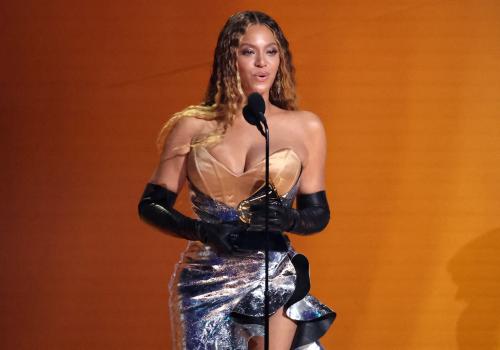

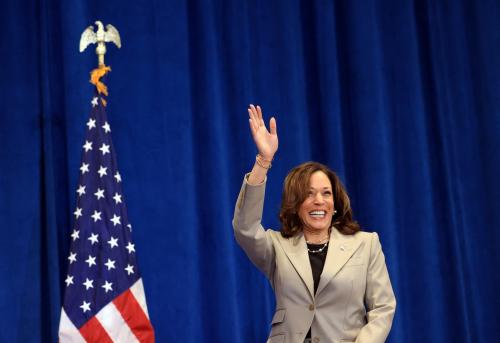

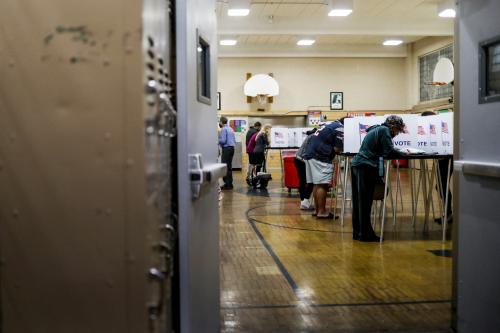
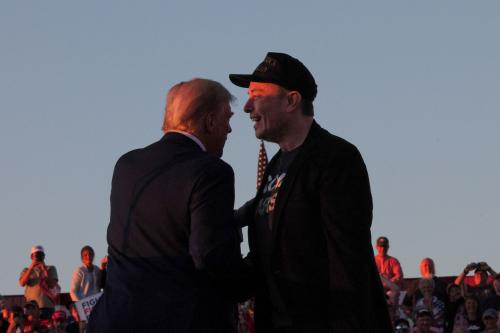
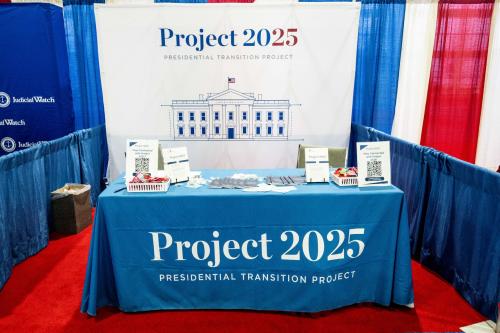
Commentary
From ‘cat ladies’ to ‘brat’—How cultural currency builds political movements
July 30, 2024